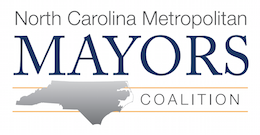Southern states do a U-turn on toll roads (USA Today)
ATLANTA — When the Florida Department of Transportation decided to add congestion-easing express toll lanes to Interstate 95 last year between Miami and Fort Lauderdale, public resistance was muted, partly because south Floridians are used to tolls.
That’s not the case in the Deep South, a region that has long resisted tolls as a “Yankee plague,” as South Carolina state Sen. Dave Thomas, a Greenville Republican, colorfully describes them.
“I don’t think of the South as having toll roads,” says William Ferris, senior associate director of the Center for the Study of the American South at the University of North Carolina. “The idea of a toll road, I don’t think of it as having any real history in the South.”
Not anymore. Toll roads — or at least plans for them — are becoming as common in Dixie as pecan pie, pickups and porch swings.
The newest twist: high-occupancy toll (HOT) lanes that are free for multipassenger vehicles. Solo drivers using the exclusive lanes pay tolls that rise or fall depending on congestion and the time of day.
The nation’s primary source of revenue for transportation projects, the federal gas tax-supported Highway Trust Fund, is shrinking as many Americans drive less and operate more fuel-efficient vehicles. “We have a transportation funding crisis,” says Pat Jones, executive director of the International Bridge, Tunnel and Turnpike Association. “Governors and mayors … are saying, ‘Look, I’m not getting any help from the federal government. I’m going to bootstrap solving the problem myself. I’m going to go for tolling.’ ”
What Southern states are doing:
•Georgia is planning an extensive network of HOT lanes on expressways in metropolitan Atlanta, including Interstates 85, 75, 575, 285 and 20. The only one that’s “a certainty” is a 14-mile stretch of I-85, says Georgia Department of Transportation spokesman David Spears. That project, which will convert an existing high-occupancy vehicle (HOV) lane in each direction to a HOT lane with variable tolls, is expected to be operational in 2011 at a cost of about $147 million. Plans call for additional HOT lanes on 15 miles of I-75, 11 miles of I-575, 9.5 miles of I-285 and 6 miles of I-20.
•Alabama is planning its first state toll road, a $710 million project that will add four toll lanes on a 16-mile stretch of U.S. 280 in Birmingham. The highway, designed to carry 50,000 vehicles daily, serves 97,000, and that number is expected to rise to 140,000 in the next decade, says Tony Hill of the Alabama Department of Transportation. “This is the best option we’ve been able to come up with … to relieve congestion along that stretch of 280.”
•Mississippi is planning a toll road linking downtown Jackson with Jackson-Evers International Airport and the eastern suburbs. Progress on the 12-mile project — the state’s first toll road — has been temporarily delayed by the recession.
•South Carolina is studying adding toll or HOV lanes to some of its interstates.
•North Carolina’s first modern toll road, the Triangle Expressway, is an 18.8-mile system now under construction in Wake and Durham counties around Raleigh-Durham. The $1 billion project, portions of which open for traffic in 2011, will collect tolls electronically.
•Tennessee recently authorized limited tolling. No existing roads can be tolled, which would prevent the state from converting toll-free lanes reserved for high-occupancy vehicles into HOT lanes.
“Everyone’s looking for flexibility,” says Neil Gray, director of government affairs at the International Bridge, Tunnel and Turnpike Association. “You have areas that never considered tolling now looking at it. The Southern states took great pride in not going to tolling. You’re seeing the same thing in parts of the West, like Nevada, where you didn’t see tolling before.”
Tim Lomax, a congestion expert at the Texas Transportation Institute at Texas A&M University, says tolling is catching on in the South for a simple reason: Sustained population growth means the region is running out of interstate capacity.
“If you have a bunch of free (interstate) capacity, you don’t need tolls,” he says. “Not until you get to the point where you have congestion, and your state DOT has difficulty building for that larger population. Until the 1980s and 1990s, in cities like Nashville, Knoxville (Tenn.) and Charlotte, you had pretty good capacity. There was congestion in certain corridors, but it wasn’t the all-encompassing Chicago- or Los Angeles-kind of problem.”
Even with all the proposals for toll roads in the region, legions of vociferous opponents to the concept still abound. Thomas, the South Carolina state senator, is one of them.
“The problem with tolls is that once you have them, rarely can you get rid of them,” he says. “With revenue sources dwindling all over the place, states are becoming desperate. But once (tolling becomes) a revenue source … it never goes away.”
By Larry Copeland, USA TODAY


